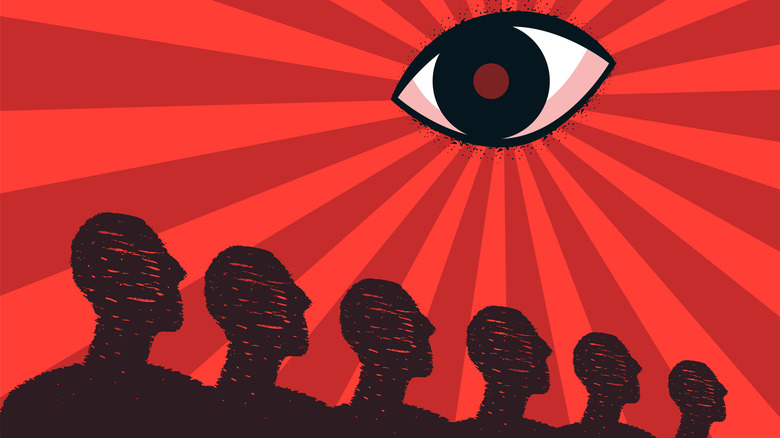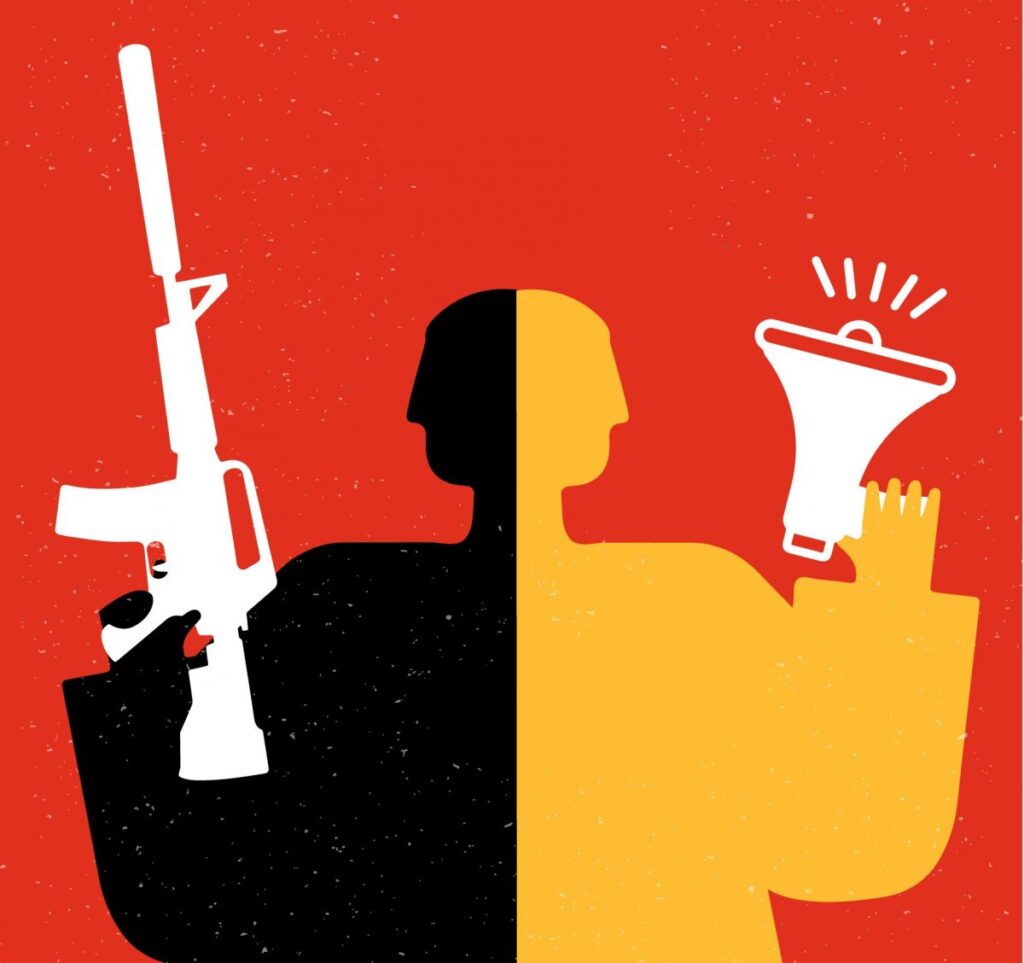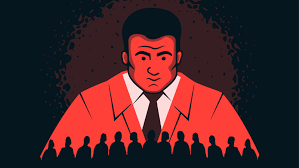The Psychology Behind the Rise of a Dictator: Understanding the Path to Authoritarian Mindsets
The phenomenon of dictatorship has intrigued psychologists, historians, and political scientists for centuries. What drives individuals to adopt authoritarian mindsets and eventually rise to power as dictators? How do ordinary people transform into rulers who centralize power, suppress dissent, and control entire nations? Understanding the mindset that fosters dictatorship requires a deep dive into the psychology of power, personality traits, and socio-political environments that nurture such behavior.
This comprehensive research-based blog will explore the psychological, societal, and environmental factors that contribute to the development of a dictatorial mindset. Drawing on historical examples and psychological theory, we will examine how personality traits such as narcissism, Machiavellianism, and paranoia play into this transformation. Additionally, we will analyze the role of external factors such as political instability, cultural contexts, and the support of key institutions like the military.
This study also reflects on historical dictators, including Adolf Hitler, Joseph Stalin, and Kim Jong-un, to better understand the commonalities and differences in their paths to power. By drawing connections between psychological traits, societal contexts, and individual actions, we aim to provide a thorough understanding of how dictatorship mindsets develop and rise to dominance.

I. The Psychological Foundations of Dictatorial Mindsets
A. Key Personality Traits Associated with Dictatorship
- Narcissism
Narcissistic personality disorder (NPD) is characterized by a pervasive pattern of grandiosity, a need for admiration, and a lack of empathy. Many dictators exhibit narcissistic tendencies, believing themselves to be uniquely qualified to lead their nations and deserving of unchallenged power. They often feel entitled to control, demanding loyalty and adoration from those around them.
Examples: Historical figures such as Adolf Hitler and Benito Mussolini demonstrated strong narcissistic traits. Both men saw themselves as saviors of their nations, and their regimes were built on cultivating a cult of personality. The need for adulation and validation from their citizens drove many of their actions.
- Machiavellianism
Machiavellianism refers to a personality trait centered on manipulation, deceit, and pragmatic, self-serving strategies to gain and maintain power. It originates from Niccolò Machiavelli’s political treatise The Prince, which advocates for cunning and ruthlessness in leadership. Individuals with Machiavellian traits are skilled at political maneuvering, often willing to betray allies or manipulate situations for personal gain.
Examples: Joseph Stalin’s rise to power exemplifies Machiavellianism. After Lenin’s death, Stalin outmaneuvered rivals like Leon Trotsky by manipulating party politics, building alliances, and eliminating enemies through purges, demonstrating a calculating and pragmatic approach to securing power.
- Paranoia
Paranoia is another key trait observed in many dictators. Dictators often perceive threats to their rule, whether real or imagined, leading them to consolidate power, suppress dissent, and engage in purges or violent crackdowns. Paranoia feeds the authoritarian’s belief that they are constantly surrounded by enemies, which justifies their repressive measures.
Examples: Kim Jong-un’s regime in North Korea is heavily marked by paranoia. Kim’s frequent purges of high-ranking officials, including the execution of his uncle, are indicative of a deep-seated fear of betrayal and a need to maintain absolute control.
- Psychopathy and Lack of Empathy
Psychopathy is characterized by a lack of empathy, manipulativeness, superficial charm, and a willingness to use others for personal gain. While not all dictators are psychopaths, many exhibit a disregard for the welfare of others, often showing no remorse for acts of violence or repression.
Examples: Dictators like Pol Pot and Saddam Hussein demonstrated psychopathic tendencies, overseeing mass killings and brutal repression without concern for the suffering they inflicted on their populations.
B. The Role of Childhood and Early Life Experiences
- Trauma and Abuse
Psychological studies suggest that early childhood trauma, neglect, or abuse can contribute to the development of authoritarian mindsets. Experiences of powerlessness during formative years may lead individuals to seek control and dominance later in life as a way to overcome feelings of inadequacy or vulnerability.
Example: Adolf Hitler’s difficult childhood, marked by an authoritarian father, has been studied extensively. His personal traumas are believed to have influenced his later desire for control, his hatred for perceived enemies, and his quest for power.
- Upbringing in Authoritarian Environments
Children raised in highly authoritarian environments may internalize the belief that dominance and control are natural and necessary for order. Dictatorship often emerges from societies where authoritarianism is normalized, and individuals who grow up in such environments may be more likely to develop dictatorial tendencies.
Example: Saddam Hussein was raised in a politically unstable Iraq, where authoritarianism and tribal politics were deeply ingrained. His experiences shaped his brutal rule and his belief in using violence to maintain power.
C. The Influence of Ideology
- Totalitarian Ideologies
Dictators often align themselves with totalitarian ideologies, whether based on nationalism, fascism, communism, or religious extremism. These ideologies provide a framework that justifies centralized control, repression of dissent, and the subjugation of individual freedoms for the perceived greater good.
Example: Mao Zedong’s adoption of Marxist-Leninist ideology provided a justification for his authoritarian rule in China. His belief in the necessity of revolution and class struggle led to policies like the Cultural Revolution, which resulted in widespread purges, persecution, and control over nearly every aspect of life.
- Creating a “Us vs. Them” Narrative
Dictators often use ideology to create a divisive “us vs. them” narrative, where they position themselves as protectors of the people against perceived enemies—both internal and external. This reinforces the dictator’s role as a necessary, almost messianic figure, and justifies repressive measures to eliminate opposition.
Example: Hitler’s ideology of Aryan superiority and anti-Semitism fueled his dictatorial regime. By scapegoating Jews, communists, and other minority groups, Hitler created an enemy that unified his followers under a common cause and justified violent oppression.
II. Societal Factors in the Rise of Dictatorships
A. Political Instability and Crises
- Economic Hardship
Economic crises often create fertile ground for dictatorship. High unemployment, inflation, and poverty breed discontent with existing democratic institutions, which may be perceived as ineffective in addressing the needs of the population. Dictators often rise by promising to restore order and prosperity, appealing to a desire for stability and security.
Example: The Great Depression played a significant role in the rise of fascist regimes in Europe. In Germany, economic instability following World War I and the hyperinflation of the early 1920s created a desperate population that was receptive to Hitler’s promises of economic revival and national greatness.
- Political Chaos and Weak Institutions
Weak or failing political institutions also contribute to the rise of authoritarian regimes. Dictators often emerge in societies where democratic institutions are either non-existent or highly dysfunctional, making it easier to seize and consolidate power.
Example: In the aftermath of the Russian Revolution, the collapse of the Romanov dynasty and the chaos of the Russian Civil War created the conditions for the Bolsheviks, led by Lenin and later Stalin, to establish a dictatorship. The lack of strong democratic traditions or institutions in Russia enabled Stalin to centralize power and eliminate opposition.
B. Cultural and Historical Contexts
- Historical Precedents of Authoritarianism
Societies with a history of authoritarian rule may be more prone to accepting dictatorship as a form of governance. In many cases, the transition from one dictator to another occurs without significant resistance, as authoritarianism is deeply rooted in the political culture.
Example: Spain’s experience with dictatorship under Francisco Franco, followed by a smooth transition to democracy, is a relatively rare case. In many other countries, such as Egypt, the fall of one authoritarian regime (Hosni Mubarak) was followed by the rise of another (Abdel Fattah el-Sisi), demonstrating the resilience of authoritarian traditions.
- The Role of Tradition and Nationalism
In some societies, tradition and nationalism play a key role in legitimizing authoritarian rule. Dictators often position themselves as defenders of national heritage, culture, and religion, using these themes to rally support and suppress opposition.
Example: In the Middle East, leaders like Iran’s Supreme Leader Ayatollah Khomeini combined religious authority with nationalist rhetoric to maintain control. By aligning himself with both Islamic tradition and Iranian nationalism, Khomeini was able to consolidate power and suppress dissent.
III. The Role of Key Institutions: The Military, Media, and Education
A. The Military as a Tool of Power
- Control over the Armed Forces
For dictators, maintaining control over the military is essential for securing power. The military often becomes both the primary enforcer of the dictator’s will and a key institution for suppressing opposition. In many cases, dictators come to power through military coups, using the armed forces to overthrow existing governments.
Example: In Chile, General Augusto Pinochet seized power in a military coup in 1973, overthrowing the democratically elected government of Salvador Allende. Pinochet’s dictatorship was characterized by military rule, with widespread repression and human rights abuses carried out by the armed forces.
- Military Dictatorships
In some cases, the military itself becomes the governing authority, with high-ranking officers assuming dictatorial powers. Military dictatorships often justify their rule as necessary to restore order, but they are typically characterized by repression, censorship, and a lack of political freedoms.
Example: Myanmar’s military junta, which ruled the country for decades, repeatedly suppressed democratic movements and justified its rule as a necessary defense against chaos and foreign influence. The military’s grip on power has
continued to shape the country’s political landscape, even after nominal transitions to civilian rule.

B. Media Control and Propaganda
- Censorship and Propaganda
Dictatorships rely heavily on controlling the flow of information. State-run media and censorship are tools used to shape public opinion and suppress dissent. Propaganda is often used to create a positive image of the dictator, portraying them as a wise and benevolent leader while vilifying opposition figures.
Example: Nazi Germany’s use of propaganda under Joseph Goebbels is one of the most well-known examples of media control in a dictatorship. The regime’s messaging glorified Hitler and the Nazi Party, while spreading anti-Semitic and nationalist ideologies. The media was tightly controlled, with dissenting voices either silenced or co-opted.
- The Role of Social Media in Modern Dictatorships
In the digital age, social media has become both a tool for dictators and a potential threat. On the one hand, authoritarian regimes use social media to spread propaganda and monitor dissent, while on the other hand, opposition movements have leveraged platforms like Twitter and Facebook to organize and challenge dictatorial power.
Example: In recent years, authoritarian regimes such as China have developed sophisticated censorship and surveillance systems to control online dissent. The Chinese government’s “Great Firewall” limits access to foreign websites, while social media platforms like WeChat are closely monitored for politically sensitive content.
C. The Role of Education in Dictatorship
- Indoctrination and Curriculum Control
Dictatorships often use education as a tool for indoctrination, shaping the beliefs and attitudes of future generations. School curriculums may be tightly controlled to emphasize loyalty to the regime, suppress critical thinking, and promote authoritarian values.
Example: In North Korea, the education system is designed to promote loyalty to the ruling Kim family and the Workers’ Party. From an early age, children are taught to revere the country’s leaders and to view the outside world, particularly the United States, as hostile and dangerous.
- Rewriting History
Dictatorships frequently engage in historical revisionism, rewriting the past to glorify the regime and its leaders while erasing inconvenient truths. This manipulation of history reinforces the regime’s legitimacy and justifies its actions.
Example: Under Stalin, Soviet history was rewritten to portray him as a close ally of Lenin and a key figure in the Russian Revolution, despite evidence to the contrary. Political rivals like Trotsky were erased from official histories, and Soviet propaganda glorified Stalin’s leadership.
IV. The Dynamics of Power Consolidation
A. The Elimination of Political Rivals
- Purge of Opposition
One of the first steps dictators often take is to eliminate political rivals. This can be done through purges, imprisonments, or executions, ensuring that no one within the government can challenge the dictator’s authority. These acts of consolidation often create a culture of fear that discourages dissent.
Example: Stalin’s Great Purge of the 1930s saw the execution or imprisonment of hundreds of thousands of people, including high-ranking Communist Party officials, military leaders, and ordinary citizens. This eliminated potential threats to Stalin’s rule and solidified his control over the Soviet Union.
- Suppressing Civil Society and Opposition Groups
Dictators often target civil society organizations, such as labor unions, human rights groups, and political opposition parties, to prevent the formation of any organized resistance. Repressive laws, censorship, and the use of state security forces help to maintain control and stifle dissent.
Example: In Egypt, the government of President Abdel Fattah el-Sisi has cracked down on civil society organizations, enacting laws that restrict the activities of NGOs and imprisoning activists who challenge the regime. This has effectively silenced much of the opposition and curtailed the ability of civil society to function.
B. The Use of Fear and Violence
- Terror as a Tool of Control
Fear is one of the most effective tools used by dictators to maintain control over a population. By creating a climate of fear through violence, repression, and arbitrary punishment, dictatorships deter opposition and prevent citizens from organizing against the regime.
Example: Pol Pot’s Khmer Rouge regime in Cambodia used widespread violence and terror to control the population. Between 1975 and 1979, an estimated two million people died from execution, forced labor, and starvation, as the regime sought to reshape Cambodian society according to its radical communist ideology.
- The Role of Secret Police
Many dictatorships rely on secret police forces to carry out surveillance, arrests, and executions. These forces operate with impunity, often using torture and other forms of violence to suppress dissent and maintain control.
Example: The Stasi, East Germany’s secret police, were notorious for their extensive surveillance of the population. The Stasi maintained a vast network of informants and used intimidation, imprisonment, and torture to suppress opposition to the communist regime.
V. Conclusion: The Complex Path to Dictatorship
The rise of dictatorial mindsets is a complex process, influenced by a combination of psychological traits, personal experiences, societal factors, and external circumstances. While the traits of narcissism, Machiavellianism, paranoia, and psychopathy are common among many dictators, the broader social and political context in which they rise to power is equally important.
Understanding how dictatorships emerge, both in historical and modern contexts, requires a multifaceted analysis that considers not only the individuals who rise to power but also the societies that enable or resist their rule. While the psychological motivations for seeking absolute control are often rooted in personality traits and early life experiences, the path to dictatorship is shaped by a combination of political instability, weak institutions, and cultural factors.
The study of dictatorships is not only a historical inquiry but a pressing concern in contemporary politics. As authoritarianism reemerges in various parts of the world, understanding the conditions that lead to the rise of dictatorial leaders can provide valuable insights into how to prevent the erosion of democracy and protect individual freedoms.
References:
- Finkel, Evgeny. Ordinary Citizens and Extraordinary Evil: Political Violence and Genocide in Political Science. Oxford University Press, 2017.
- Stokes, Bruce. “How Authoritarians Are Taking Over Democracies.” The Atlantic, January 2020.
- Milgram, Stanley. Obedience to Authority: An Experimental View. Harper & Row, 1974.
- Arendt, Hannah. The Origins of Totalitarianism. Harcourt Brace Jovanovich, 1951.
- Altemeyer, Bob. The Authoritarians. 2006.






